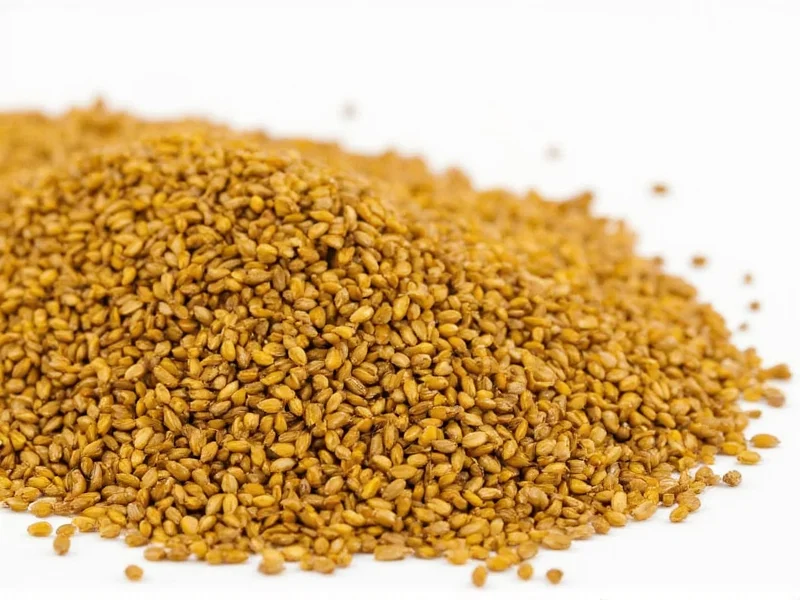For thousands of years, mustard seeds have played a vital role in global food traditions and cultural practices. These small but mighty seeds come from various mustard plant species and have become indispensable in kitchens and traditional medicine systems worldwide. Understanding their diverse applications helps home cooks, health-conscious individuals, and cultural historians appreciate their significance beyond the familiar yellow condiment.
Culinary Applications of Mustard Seeds
Mustard seeds serve as a fundamental flavoring agent across numerous culinary traditions. When heated in oil, they release a nutty aroma and complex flavor that forms the base of many Indian curries and pickles. In European cuisine, particularly in Germany and France, they're essential for preparing traditional mustards ranging from smooth Dijon to coarse whole-grain varieties.
Chefs value mustard seeds for their versatility. They can be used whole, cracked, or ground depending on the desired intensity. Whole seeds provide subtle flavor and interesting texture, while ground seeds create the pungent condiment we recognize as mustard. The chemical reaction between ground mustard seeds and liquid creates that characteristic sharp taste through the release of allyl isothiocyanate.
| Type of Mustard Seed | Flavor Profile | Common Culinary Uses |
|---|---|---|
| Yellow/White (Sinapis alba) | Mild, slightly tangy | American yellow mustard, pickling, salad dressings |
| Brown (Brassica juncea) | Medium heat, complex flavor | Dijon mustard, Indian curries, Chinese hot mustard |
| Black (Brassica nigra) | Strongest, most pungent | Traditional Indian cooking, Ethiopian stews, specialty mustards |
Traditional Medicinal Applications
Historically, mustard seeds have featured prominently in Ayurvedic and traditional Chinese medicine systems. Practitioners have used mustard seed preparations as topical treatments for muscle pain and respiratory conditions. Mustard plasters—pastes made from ground seeds applied to the skin—were common in 19th century European medicine for treating chest congestion.
Modern research suggests mustard seeds contain compounds with potential health benefits, including selenium and magnesium. They also provide omega-3 fatty acids, fiber, and various phytonutrients. However, scientific evidence supporting specific medicinal claims remains limited, and mustard seeds should not replace professional medical treatment for health conditions.
Industrial and Cultural Significance
Beyond the kitchen and medicine cabinet, mustard seeds serve several industrial purposes. The oil extracted from mustard seeds finds applications in cosmetics, particularly in hair care products valued for promoting scalp health. In agriculture, mustard plants function as effective cover crops that help control soil-borne diseases.
Culturally, mustard seeds hold symbolic importance in several religious traditions. In Christianity, the parable of the mustard seed represents how small beginnings can lead to significant outcomes. In Hindu traditions, mustard oil plays a role in religious ceremonies and rituals.
Practical Cooking Techniques
To maximize flavor when using mustard seeds in cooking, proper technique matters. Dry roasting whole seeds in a pan before grinding enhances their nutty characteristics. For Indian cuisine, the traditional tadka or tempering method involves heating mustard seeds in oil until they pop, releasing aromatic compounds that infuse the entire dish.
When making homemade mustard, the liquid used affects the final product's heat level. Vinegar creates a sharper flavor, while wine or beer produces more complex notes. The coarseness of the grind determines texture, with stone-ground mustard offering both visual appeal and varied flavor release.
Safety and Consumption Guidelines
While generally safe for consumption, mustard seeds contain compounds that can cause irritation in large quantities. Some individuals experience allergic reactions to mustard, particularly those with sensitivities to other Brassica family plants like broccoli or cabbage. The European Union requires mustard to be listed as an allergen on food labels.
Consuming extremely large amounts of mustard seeds may cause gastrointestinal distress. As with any food, moderation is key. Those with thyroid conditions should consult healthcare providers about mustard seed consumption, as they contain goitrogens that may affect thyroid function in sensitive individuals.
Conclusion
From ancient spice routes to modern kitchens, mustard seeds have maintained their relevance through versatile applications across culinary, traditional medicinal, and cultural contexts. Their distinctive flavor profile, relative ease of cultivation, and potential health properties continue to make them valuable worldwide. Whether you're exploring Indian cooking techniques, investigating traditional remedies, or simply curious about this common spice, understanding what mustard seeds are used for enhances appreciation for this small but significant botanical resource.











 浙公网安备
33010002000092号
浙公网安备
33010002000092号 浙B2-20120091-4
浙B2-20120091-4